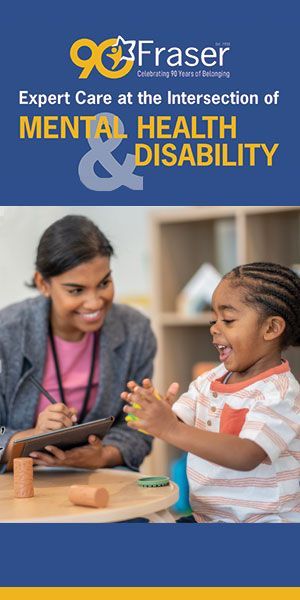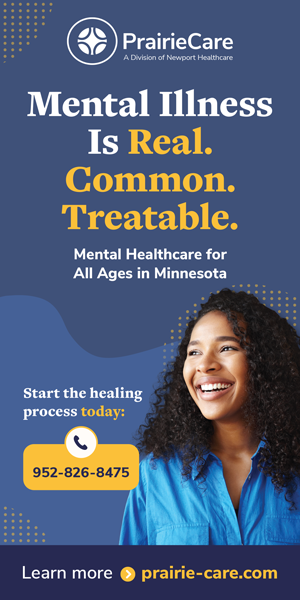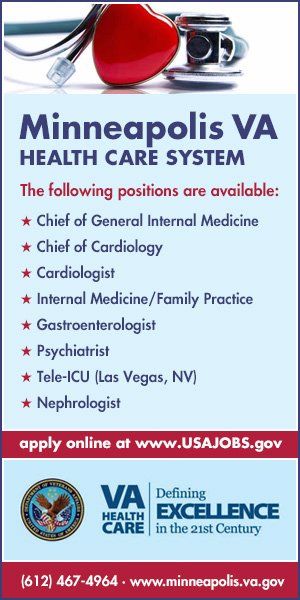earned behavior begins very early in life and it has been fairly well proven that what you learn as a child will play a significant role in the behavior you model later in life. If, for example, a child is exposed to domestic violence and substance use disorders these things may become issues later in life. These issues may begin to manifest themselves very early in terms of distancing as a means of self-preservation, which can sometimes lead to attention deficit or obsessive-compulsive disorders. These concerns may be exacerbated by the ubiquitous bombardment of rapid-fire media, through cell phones, computers and many other sources. Everyone has been in a restaurant and seen some adorable young child walking around in a daze staring at a cell phone screen.
Public Health
Improving pediatric health
A new tool for school classrooms
BY Simone Hardeman-Jones and Laura Bakosh, PhD
By the time children today reach school age, and even those who attend pre-school, they have already been exposed to enough anxiety-causing over stimulation, and predictable negative responses are evident. As the child progresses through grade school, these responses often lead to significantly lower academic achievement, concerns that are amplified when the child has also been exposed to a range of environmental adversity and chronic stress, such as food insecurity and housing concerns. Such hardships in childhood can have lasting effects on the brain, affecting cognitive function. A range of adversities is associated with lower levels of white matter microstructure throughout the brain that can lead to lower performance of mathematics and language tasks. Looking at school age mental health, most neuroscience experts point to the brain changes associated with stress and trauma as the likely cause of the achievement gap and academic under performance. Recent studies have noted this academic performance declined with nearly 75% of fourth and eighth graders not proficient in basic skills.
Addressing the Problem
Physicians, especially pediatricians and family medicine providers, are increasingly on the front lines of youth behavioral health. From anxiety to attention challenges, stress-related illness to sleep disturbances, these concerns show up regularly in exam rooms. But medical care alone cannot meet the growing demand, especially when many children lack access to timely mental health services.
Schoolrooms present the clearest opportunity to confront these issues. However, between strained school budgets, increased student anxiety, sweeping programmatic and staff reductions, particularly among school counselors and social workers, it is a difficult challenge. At the same time, schools are being asked to address rising behavioral concerns and build trauma-informed cultures.
One emerging solution that is yielding very promising results is a surprisingly simple and inexpensive tool called Inner Explorer (IE). It is an audio-guided program formatted on the mindfulness-based stress reduction (MBSR) protocol that has been rigorously researched for over 40 years. Thousands of scientific studies have demonstrated proof of efficacy, and it is in use in school systems worldwide.
Over 37% of high school students nationwide report persistent sadness, with 16% making a suicide plan.
Practical Application
In Minnesota there are 2,249 K-12 schools and nearly 870,000 students. Annual public school funding is just under $15 billion, yielding a per student cost of around $17,000. Through a new partnership with GreenLight Fund Twin Cities (GLFTC) — a local organization that identifies and invests in proven, innovative programs to address urgent needs in the community — Inner Explorer is expanding its reach to include Minnesota in helping schools embed well-being into the rhythm of every school day. After months of listening sessions with families, educators and community partners, one priority rose to the top: youth mental health. Leveraging data and insights gathered from the community, GLFTC uncovered a critical gap: under-resourced youth in the state, particularly Black, Latino American and Indigenous youth often lacked access to essential mental health services. In fact, these young people are up to 50% less likely to receive community-based mental health care compared to their white peers. If we want to close the achievement gap we need to prioritize stress resilience practice for all children, and particularly for children of color.
Embedding mindfulness into daily classroom routines, reaching students where they are, and helping schools become proactive partners in improving behavioral health can help close that gap. Many countries have already started incorporating mindfulness practices into their school curriculum.
The need for tools like this is urgent. In recent years, schools in Minneapolis and St. Paul have faced significant challenges. Academic achievement gaps have persisted, and behavior issues have increased, compounded by the mental health toll of the pandemic. According to CDC data, over 37% of high school students nationwide report persistent sadness, with 16% making a suicide plan.
This is where mindfulness becomes a critical tool. As part of a broader strategy for prevention and well-being, school-based mindfulness supports the social determinants of health by fostering safer, more emotionally supportive learning environments. It complements clinical care, building daily habits of self-regulation, body awareness, and emotional resilience — skills that benefit patients now and well into adulthood.
What is Mindfulness?
Mindfulness (or mindful awareness) is the practice of paying attention to the present moment. Mindful awareness, when practiced regularly, helps children avoid distraction and unhealthy mental habits while allowing them to improve their focus, regulate their emotions and engage more effectively with classmates and teachers. Very few of us really pay attention to any activity as it’s happening. When we do, an entirely new world opens up. The more we tune into the present moment, the more fully we can live our lives. We learn to slow down the chattering mind and notice our senses, thoughts and emotions without judging them as right or wrong. We become familiar with the beauty, wisdom, passion and compassion that exist in all of us. Mindfulness has been shown to improve impulse control across a wide range of participants and age groups. It’s particularly effective in addressing mental health issues linked to poor impulse control, including aggression and executive function impairments.
To achieve the many benefits of mindfulness, including self-awareness, self-control, resilience, compassion, academic success and a heightened sense of wellbeing, daily practice is necessary. A 10-minute practice, simply sitting with eyes closed and focusing inward, lays the foundation for one to be mindful throughout the rest of the day. It helps to create a healthy habit of mindfulness like brushing your teeth or wearing your seatbelt. Over time, commitment to this practice becomes less challenging as it becomes an integral part of your day. When teachers commit to using the Inner Explorer programs on a daily basis for 30 days, they are more likely to stay with the program on a continuing basis and report significant, positive changes for themselves and their students.
Each day, in just five to ten minutes, students across grades listen to brief mindfulness sessions that guide them to focus on their breath, notice their emotions and reset their nervous systems. The results are tangible: improved focus, reduced stress and more connected classrooms. For teachers, the practice offers a moment of shared calm — a small but powerful antidote to burnout.
“We are beginning to see firsthand how mindfulness practices help children regulate their emotions, settle their bodies, and re-engage with learning” says Monshari Chandler, Head Start/Early Head Start Director, Parents in Community Action (PICA), a local Head Start organization that serves hundreds of children, 3 to 5 years old, in Hennepin County. “But it also supports our educators. They need moments of calm too — especially now”
The need for tools like this is urgent.
In Brooklyn Center Community Schools, which serve a diverse student body just outside Minneapolis, Inner Explorer has helped address many challenges.
“We’ve always used sensory breaks in the classroom to help regulate students, but since introducing daily mindfulness, we’ve seen a meaningful drop in behavior incidents,” shared Melissa Storbakken, principal/head of school at Global Academy. “It’s helping students reset and refocus on their academics more quickly, especially after the multiple transitions throughout the day.”
Mindfulness is not a “soft skill.” It’s a neurologically grounded practice that has been shown to decrease cortisol levels and strengthen the prefrontal cortex, which is critical for decision-making and impulse control. For children, this means fewer emotional outbursts, better sleep, improved concentration and reduced symptoms of anxiety or depression.
Proven Results
Use of the IE platform not only reduces stress, anxiety and depression, but also helps establish a foundation for learning readiness, which benefits both learners and educators.
In Atlanta and Charlotte, cities where GreenLight has also funded the expansion of IE, the program reached more than 75,000 students and teachers last year resulting in a 30% improvement in focus and classroom readiness in Charlotte and a 25% improvement in teaching efficacy in Atlanta due to improved student engagement and fewer outbursts in the classroom.
IE has demonstrated powerful results, with data showing that consistent use of the program can reduce disciplinary actions in classrooms by 60% and improve overall academic performance by up to 15%. In the Twin Cities, this initiative is anticipated to deliver similar transformative outcomes by reaching more than 130,000 young people, families and educators over the next four years. Through partnerships with 360 schools and community organizations, IE will provide culturally responsive tools that support academic, social and emotional growth, creating lasting impact across the community.
As students learn to regulate their attention, emotions and behaviors, they perform better in school, experience fewer discipline problems and develop resilience to counteract the negative effects of stress and anxiety. When teachers practice with their students, they report a 43% decrease in their stress levels which helps them reconnect with their love of teaching. We are at a critical point in education in the U.S. Declining test scores, high dropout rates and reduced global competitiveness for the past several decades underscore the severity of our educational challenges. Even with recent gains in a few academic categories, many of our children are not adequately prepared to successfully navigate the workforce of the 21st century.
Children who participate in this type of mindfulness training demonstrate improved focus, increased creativity, higher academic performance, less stress and consistent prosocial behaviors. Bolstering these self-regulation skills through mindful awareness training predicts school achievement in reading and mathematics better than IQ scores. The bottom line is that mindful students improve their grades, rate themselves as more happy/content and improve their ability to get along with their peers, teachers and family members. Discipline issues go down while performance and a sense of community go up.
What Health Care Providers Can Do
As stressors in children’s lives increase, whether due to economic insecurity, family instability or community violence, health care providers must expand their view of what wellness looks like. Prescribing mindfulness in the form of evidence-based, school-integrated programs like Inner Explorer can be a powerful step forward. Other steps could include:
- Recommend mindfulness to families as part of a whole-child approach to wellness.
- Partner with local schools and community organizations to support adoption of trauma-informed, evidence-based mindfulness programs.
- Advocate for public investment in community and school-based mental health infrastructure that includes preventive tools like mindfulness.
- Lead by example, integrating mindfulness into your own practice to manage burnout and model well-being.
IE is deeply accessible: educators simply press ‘play,’ and everyone participates — no special preparation or training is required. With content in English and Spanish, diverse narrators, and integration into school platforms such as Clever, Canvas, and Google, the barrier to entry is low.
The cost to put Inner Explorer in every school to serve every student and family in Minnesota is about $6.5 million per year, with an average cost per student of just $7.50. The program has proven to deliver improved classroom attendance with fewer suspensions and reduced teacher attrition, yielding a return on investment of 485%!
The work is already underway in the Twin Cities. Schools and centers in the region are beginning to adopt IE. Parents in those schools receive free access to the practices from home or at work, creating a consistent, calming routine that bridges school and family life.
Based on all the information we’ve provided, students in Minnesota would benefit greatly from practicing mindfulness daily in their classrooms. In addition to the health, wellbeing and academic benefits, it is a wise move for the state to invest $6.5 million to save $38 million. The broadest long-term benefits of utilizing the IE program are achieved through adoption at the state public-school system level, but any single or private school could easily integrate this tool for a proportionately low comparative cost.
The ultimate goal? To create environments where students feel safe, focused and emotionally ready to learn. Where educators have tools to manage their own stress and lead with clarity. And where mindfulness isn’t an add-on, it’s part of how schools operate every day.
In the noise and uncertainty of today’s world, one thing is becoming clearer in Twin Cities schools: quiet minds make for stronger learners — and stronger communities. And physicians have a vital role to play in helping that movement grow.
Simone Hardeman-Jones is the founding executive director of GreenLight Fund Twin Cities.
Laura Bakosh, PhD, is the co-founder of Inner Explorer.
MORE STORIES IN THIS ISSUE
cover story one
Diplomatic Defiance: Tools for courageous leadership
By Wendy Dean, MD
cover story two
Integrating Physical and Behavioral Health Care: Solutions and benefits to the challenges




































